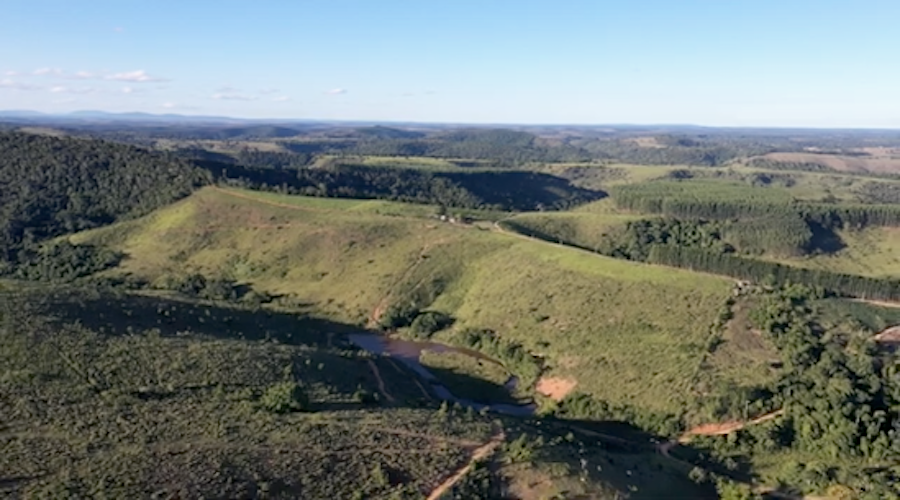The National Football League (NFL) and its players' association have agreed to enhanced concussion protocols after a head injury suffered by Miami Dolphins quarterback Tua Tagovailoa prompted widespread concern.
Reuters | Updated: 09-10-2022
The National Football League (NFL) and its players' association have agreed to enhanced concussion protocols after a head injury suffered by Miami Dolphins quarterback Tua Tagovailoa prompted widespread concern. A joint statement from the two parties on Saturday said ataxia - which includes abnormal balance, motor coordination or "dysfunctional speech" - would be added as a "no-go" symptom. Players diagnosed with ataxia during a game will not be allowed to return to the field.
Tagovailoa was carried off the field last week when his head slammed into the turf as he took a sack during a game against the Cincinnati Bengals. Fans and armchair experts alike questioned why he was allowed to play against the Bengals as four days prior he looked disoriented after hitting his head to the ground during a game against the Buffalo Bills.
Miami coach Mike McDaniel defended his decision to allow Tagovailoa to play against the Bengals, saying "several layers of medical professionals" had cleared the quarterback. The NFLPA initiated an investigation into the incident.
"While the investigation determined that the team medical staff and unaffiliated medical professionals followed the steps of the Protocol as written, the NFL and NFLPA agree that the outcome in this case is not what was intended when the Protocols were drafted," the joint statement read. Tagovailoa will not travel for his team's Sunday game against the New York Jets.
Tua Tagovailoa injury: NFL and players association agree to enhanced concussion protocols
"While the investigation determined that the team medical staff and unaffiliated medical professionals followed the steps of the Protocol as written, the NFL and NFLPA agree that the outcome in this case is not what was intended when the Protocols were drafted," a joint statement read
Miami Dolphins Tua Tagovailoa was taken to hospital with head and neck injuries after being forced out of the game against the Cincinnati Bengals but should he have taken the field in the first place after being concussed four days earlier?
The National Football League (NFL) and its players' association have agreed to enhanced concussion protocols after a head injury suffered by Miami Dolphins quarterback Tua Tagovailoa prompted widespread concern.
A joint statement from the two parties on Saturday said ataxia - which includes abnormal balance, motor coordination or "dysfunctional speech" - would be added as a "no-go" symptom. Players diagnosed with ataxia during a game will not be allowed to return to the field.
Tagovailoa was carried off the field last week when his head slammed into the turf as he took a sack during a game against the Cincinnati Bengals.
Fas and armchair experts alike questioned why he was allowed to play against the Bengals as four days prior he looked disoriented after hitting his head to the ground during a game against the Buffalo Bills.
Dolphins QB Tagovailoa ruled out of Jets match due to concussion
Miami coach Mike McDaniel defended his decision to allow Tagovailoa to play against the Bengals, saying "several layers of medical professionals" had cleared the quarterback.
The NFLPA initiated an investigation into the incident.
Miami Dolphins head coach Mike McDaniel described Tua Tagovailoa's collision as 'scary' after the quarterback was hospitalized against the Cincinnati Bengals
"While the investigation determined that the team medical staff and unaffiliated medical professionals followed the steps of the Protocol as written, the NFL and NFLPA agree that the outcome in this case is not what was intended when the Protocols were drafted," the joint statement read.
"As such, as has been done in previous cases, based on the advice of the parties' respective medical experts, the Protocol will be modified to enhance the safety of the players. Specifically, the term "ataxia" has been added to the mandatory "no-go" symptoms.
"'Ataxia" is defined as abnormality of balance/stability, motor coordination or dysfunctional speech caused by a neurological issue.
"In other words, if a player is diagnosed with "ataxia" by any club or neutral physician involved in the application of the Concussion Protocol, he will be prohibited from returning to the game, and will receive the follow-up care required by the Protocol."
Tagovailoa will not travel for his team's Sunday game against the New York Jets.
Ward: Tagovailoa 'could have died' | Joe Burrow: Head injuries part of NFL
Miami Dolphins quarterback Tua Tagovailoa "could have died" as a result of the mismanagement of a concussion, former rugby league player Stevie Ward has told Sky Sports.
Ward, who was captain of Leeds Rhinos before he was forced to retire from rugby league at the age of 27 due to concussions he suffered on the field, said: "We need to sit with the understanding that people are getting really ill, whether that's short-term or long-term."
Former Leeds Rhinos forward Stevie Ward, who retired aged 27 due to long-standing consequences of a concussion injury, says Tua Tagovailoa could have died, after re-entering the field against the Buffalo Bills following a concussion.
Cincinnati Bengals quarterback Joe Burrow described Tua Tagovailoa's injury as 'scary' after he was taken to hospital with head, neck and back injuries
"I saw that injury, the first one on the Sunday," Ward said. "And the way that he got up, then stumbling to the floor - his team-mates holding him up, knowing it's not right - there's fundamentally something wrong.
by Ian Rapoport & Tom Pelissero
The NFL and NFL Players Association have agreed to parameters of updated concussion protocols that will rule out players who exhibit gross motor instability as Tua Tagovailoa did during the Dolphins' Week 3 game against the Bills, regardless of any possible contributing factors, sources informed of the talks told NFL.com on Saturday.
The agreement is subject to formal approval, including from the NFLPA's health and safety committee.
NFL chief medical officer Dr. Allen Sills told NFL Media on Sunday morning that the NFL's head, neck and spine committee and the NFLPA's Mackey-White health and safety committee are still in discussions about the final language and unintended consequences of the new protocol, but if approved, changes could take effect in Week 5.
Sills also emphasized that team physicians, unaffiliated neurotrauma consultants and certified athletic trainers will need to be educated about how to apply updated protocols to make sure it's consistent across the league before anything goes into effect.
In a joint statement on Saturday, the NFL and NFLPA said they both agree that changes are needed "to enhance player safety."
"The joint NFL-NFLPA investigation into the application of the Concussion Protocol involving Miami Dolphins' quarterback Tua Tagovailoa remains ongoing," the joint statement read. "Therefore, we have not made any conclusions about medical errors or protocol violations.
"The NFL and the NFLPA agree that modifications to the Concussion Protocol are needed to enhance player safety. The NFLPA's Mackey-White Health & Safety Committee and the NFL's Head Neck and Spine Committee have already begun conversations around the use of the term 'Gross Motor Instability' and we anticipate changes to the protocol being made in the coming days based on what has been learned thus far in the review process.
"The NFL and NFLPA share a strong appreciation for the unaffiliated neurotrauma consultants who contribute their time and expertise to our game solely to advance player safety. This program has made our game safer for the athletes who play it for the past twelve seasons."
While the updated protocols aren't yet in effect, Saturday's statement puts all parties on high alert as Week 4 continues with 14 games on Sunday: If there's any doubt, get the player out.
The league's concussion protocols have become a widespread point of debate the past week in light of two incidents involving Tagovailoa: Doctors clearing him to return last Sunday against the Bills after he hit his head and stumbled after getting up, saying it was caused by a back injury; and then Tagovailoa suffering a frightening concussion four days later in Cincinnati, during which his arms locked and hands twisted in a fencing response before leaving the stadium in an ambulance.
Because Tagovailoa's stumble last Sunday was attributed to his back, and not due to neurological issues, that was not considered a "no-go" under the existing, jointly negotiated concussion protocols -- a conclusion disputed by the NFLPA and union president JC Tretter, who issued a statement Friday saying players were "outraged" by what he called a failure in medical judgment.
Tagovailoa was discharged from the hospital Thursday night in time to fly home with the team and, he released a statement Friday, saying he's "feeling much better and focused on recovering so I can get back out on the field with my teammates."
Tagovailoa has been in the NFL's concussion protocol since Thursday's game, and he's also been dealing with a sore neck. As a precaution, his neck was immobilized on the plane. He's had follow-up CT scans and other tests, with an MRI coming on Friday. According to a source, all those tests have come back clean.
The updated protocols will essentially close the loophole that allowed Tagovailoa to return to the field against the Bills, eliminating any subjectivity about the cause of a player's instability and simply ruling the player out. The league said Wednesday it believes the protocols were followed; under the updated protocols, doctors will not be in position to make a judgment on why a player was unstable.
The NFLPA initiated an investigation hours after the initial incident on Sept. 25 into the handling of Tagovailoa's concussion evaluation. Under the collective bargaining agreement, that investigation is conducted jointly by the NFL and NFLPA with a resolution expected in the next week or two.
On Friday, those conducting the review interviewed the Dolphins' team physician and the unaffiliated neurotrauma consultant who were involved with Tagovailoa's concussion check last Sunday in Miami. On Saturday, the union exercised its right to terminate the UNC, citing several factors, including his failure to understand his role and hostility during the investigation process, sources say.
Sideline UNCs are assigned by the NFL head, neck and spine committee and approved by Sills and the NFLPA medical director.
Sills deferred questions about the termination of the UNC to the NFLPA, which made the termination decision. He also declined comment on the investigation into the handling of Tagovailoa's concussion evaluation but reiterated that there will be full transparency once the probe is complete.
According to the 2020 collective bargaining agreement: "The Sideline UNC may present his/her own questions or conduct additional testing and shall assist in the diagnosis and treatment of concussions. Regardless, the responsibility for the diagnosis of concussion and the decision to return a player to a game remains exclusively within the professional judgment of the Head Team Physician or the team physician assigned to managing TBI."
In an emotional press conference on Friday, Dolphins coach Mike McDaniel said he had "100 percent conviction in our process" and repeatedly saying the doctors' conclusion was that Tagovailoa didn't suffer a head injury last Sunday.
The Dolphins' next game is Oct. 9 against the Jets -- 10 days after Tagovailoa's injury in Cincinnati, where Teddy Bridgewater replaced Tagovailoa in a 27-15 loss, Miami's first of the season. There is currently no timeline on Tagovailoa's return.
In the wake of the controversy surrounding Dolphins quarterback Tua Tagovailoa and the team’s handling of his injuries this week, the NFL and NFLPA have agreed to make changes to the league’s in-game concussion protocols.
A joint statement released on Saturday reads, “The joint NFL-NFLPA investigation into the application of the Concussion Protocol involving Miami Dolphins’ quarterback Tua Tagovailoa remains ongoing. Therefore, we have not made any conclusions about medical errors or protocol violations.”
While that remains true, the investigation has already led to the unaffiliated neurotrauma consultant involved in Tagovailoa’s case being terminated by the player’s union. A number of “mistakes” were cited as the reason that action was taken; adding more detail on that front, Ian Rapoport and Tom Pelissero of NFL Network report that the UNC was fired due to “his failure to understand his role and hostility during the investigation process.”
At the center of the controversy is the fact that, under current protocols, the matter of “gross motor instability” being showed by players is subject to interpretation with respect to its cause. In Tagovailoa’s case on Sunday, his notable stumble after taking a hit was ultimately deemed a back injury, rather than a concussion. After the amended protocols come into effect, however, any player demonstrating a similar loss of balance will automatically be ruled out, regardless of team medical staff’s determinations on the specifics of an injury.
“The NFL and the NFLPA agree that modifications to the Concussion Protocol are needed to enhance player safety,” the statement continues. It adds that the league and union “share a strong appreciation for the unaffiliated neurotrauma consultants who contribute their time and expertise to our game solely to advance player safety. This program has made our game safer for the athletes who play if for the past twelve seasons.”
The amendments are expected to be formally ratified in the coming days, and could take effect in time for Week 5. Over the course of the remaining games on this week’s slate, though, teams will no doubt proceed with enhanced caution in the event of any head injuries which take place.
Rapoport and Pelissero add, meanwhile, that Tagovailoa (who has been in concussion protocol since being carted off the field on Thursday) has undergone a series of tests, all of which have “come back clean.” By the time he is cleared to return, new regulations will likely officially be in place to try and ensure a repeat of his situation does not occur.
















